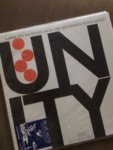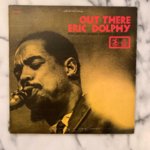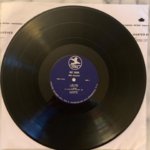Here's some info on bebop for anyone reading this who is just getting into jazz.
Don Was is right; you do not need to know music theory or be an historian of jazz to appreciate bebop. The great thing about appreciating art is that you don’t need any authority figure to sign off on your enjoyment, and you don’t have to enjoy it in the same way as anyone else. So, if it was love at first sight (first sound?) for you when you first heard bebop, you certainly don’t need to learn any tips for how to understand some of the complexity you’re hearing (though this might help you appreciate it in a new, additional, way). If, on the other hand, you find bebop a little bewildering but are still intrigued, you may find that some of the pointers here give you an aural foothold.
Bebop can be understood as an aesthetic for performance
Bebop is a style of performing music, and any song can be played in a bebop style. One aspect of the particular aesthetic of bebop is to play long passages of notes in a rapid, steady succession. The quickness and evenness of the notes gives bebop a characteristic aggressive frenetic feel. It can feel like listening to a manic, run-on sentence. How does this help? “Bebop” is a name that was given after the fact to the way a group of musicians made the intentional decision to perform
popular songs of the day. The fact that bebop was the style played over a pre-existing songs, rather than a school of composition makes it much easier for the listener to find a way in because the song supplying the raw materials for the soloist’s performance may be familiar to the listener. And, even if the song is new to the listener, the popular songs often had predictable and repetitive forms.
Repetition might be your way in, and was ultimately a causative factor in many bebop players’ transition out of bebop and into new styles
Consider the children’s song Old MacDonald Had a Farm. That song has two main melodies. Melody A is “Old MacDonald Had a Farm e i e i o.” The part that goes “and on that farm he had a cow” also uses Melody A. Melody B is the “with a moo moo here…” part. The overall form of the song is melody A, melody A
again, melody B, and melody A for a third time. After that, the whole song repeats. This is such a common song form that it is usually referred to as AABA. Depending on your level of musical training, you may or may not have a difficult time hearing when the form ends and starts again (the bebop equivalent of every time a new animal is introduced into the Old MacDonald song). If a bebop song has more than one soloist (e.g. a saxophone and a trumpet), a fun and interesting way in is to try and remember that both the saxophone player and the trumpet player are making up their solos over the exact same form. To continue the ridiculous Old MacDonald analogy, you might imagine it as similar to each soloist getting to freely choose the animal on the farm when it’s their turn to solo. Once the soloist chooses the animal, there are rules of the form of Old MacDonald that dictate how the soloist will incorporate the noise that animal makes to complete their verse. In order for it to make sense, everyone has to agree that “quack” is a noise that is appropriate for the animal named, and the singer has to fit it into the rhythmic space afforded by the “with a __________ here and a _________ there, here a ___________, there a ________, everywhere a __________.” Like Old MacDonald, a song played in the bebop style can go on forever. You can sing one verse or ten, you can trade off with friends, and–if you are forced to sing it every night for hours on end–you might eventually end up making little musical jokes or weird references once you’ve exhausted all of the straightforward options.
One of the joys of jazz is listening to how the musicians interact…
This is definitely
NOT bebop, but it’s a wonderful and charming example of the interactions between soloists. Here, Louis Prima sings the song “Pennies from Heaven,” and saxophonist Sam Butera tries to immediately repeat every one of Louis Prima’s phrases.
As the call-and-response develops, Louis Prima begins to toy with Sam Butera and try to sing a phrase the saxophonist can’t quite get.
A similar dynamic unfolds in the opening of the Charlie Parker classic
“Ornithology.” At the end of the first statement of the melody, the piano imitates the rapid succession of notes just played by the saxophones, guitar, and trumpet (this happens at 18 seconds), before developing it into a new phrase. When the same musical moment comes around again at 34 seconds, the same riff is repeated by several different instruments (trumpet, alto saxophone, tenor saxophone, guitar) before Charlie Parker launches into his solo. Even though the goal isn’t to copy each other as in the opening of Ornithology, bebop soloists are still playing the same thing on a deeper level underneath the notes of their melodies; the song provides a repetitive structure with rules, and each soloist enters that space to create music (it’s good to remember that there is nothing binding the soloist to follow the rules!). As you hear Charlie Parker solo on the alto saxophone, Miles Davis solo on the trumpet, and Lucky Thompson solo on the tenor saxophone, what similarities do you notice? What differences do you notice? Does one seem to play faster? Do any of the soloists seem to repeat ideas? Does one soloists playing feel more “jumpy?”
Much of the classic repertoire of bebop is highly repetitive so listening to the way each soloist within a song (or across different versions of a song) handles the “same material” is always an interesting exercise. As a final example of this type of listening, here is
“Giant Steps” by John Coltrane. This song is famously opaque to many listeners. What differences do you hear between the saxophone solo and the piano solo? Can you hear when it sounds like the piano player runs into difficulty playing in this style and the rhythm gets choppy? Do you hear when the piano player turns to playing chords and leaving lots of space? Can you hear the comparative certainty and intensity when John Coltrane jumps back in for another short solo? The pianist Tommy Flanagan was a very talented improviser. What does that tell you about the difficulty of the song?




